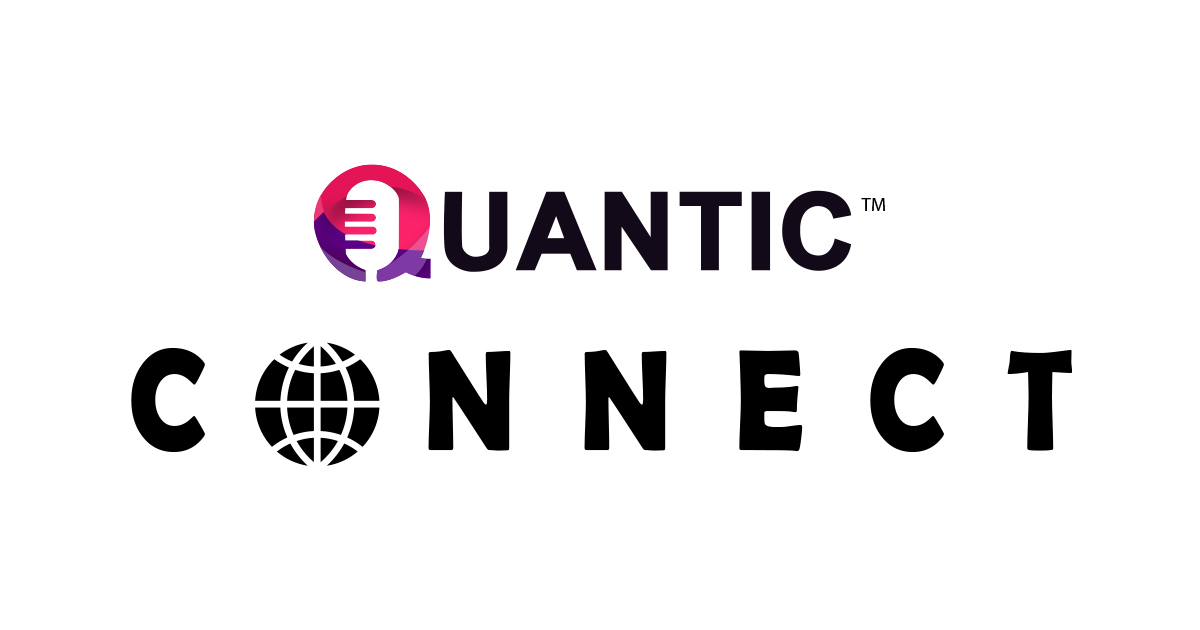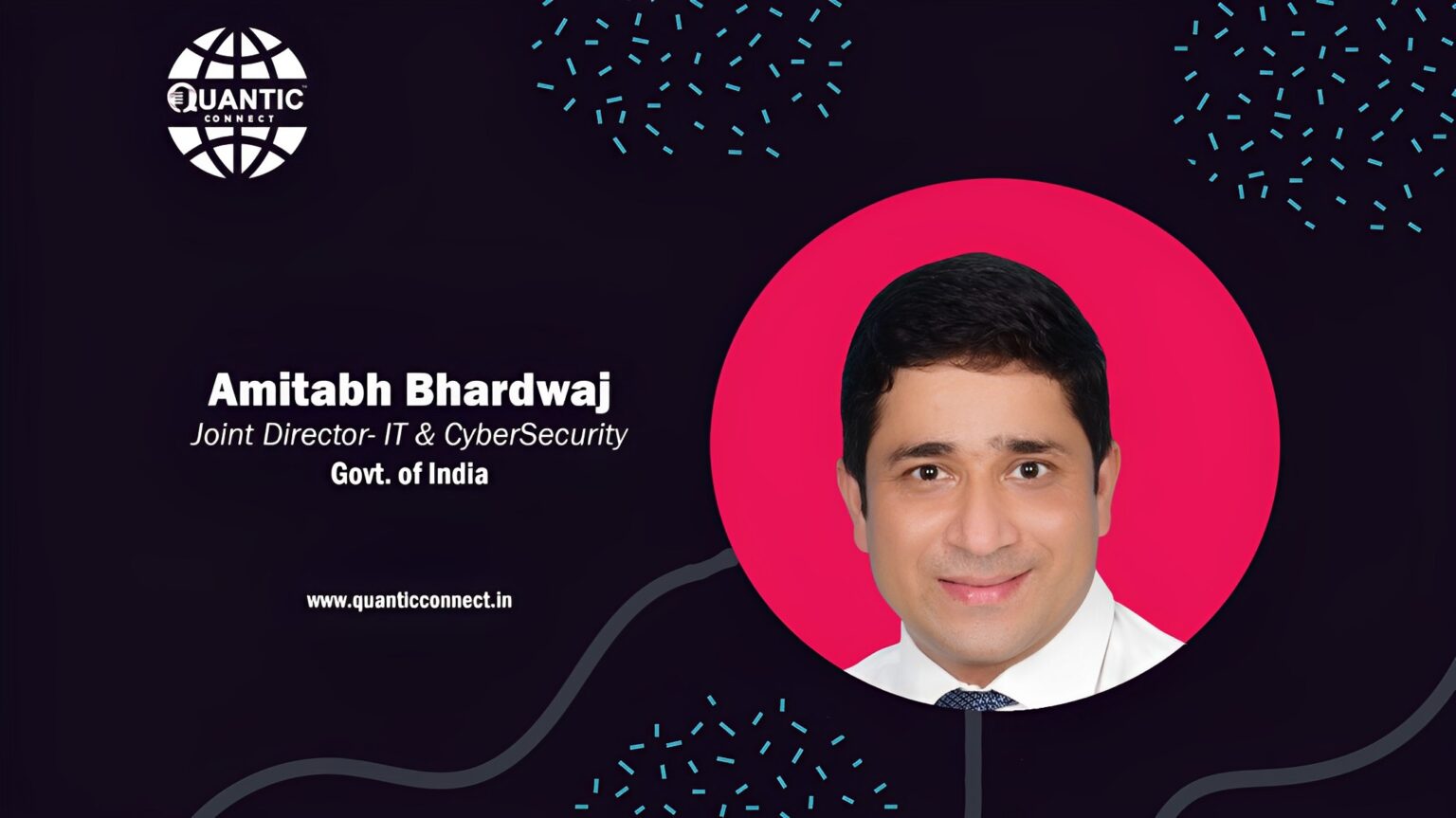Mumbai, 28th August: In today’s rapidly evolving digital landscape,
cybersecurity has emerged as a critical concern for businesses of all sizes and
industries. The interconnectedness of systems, the rise of remote work, and the
growing reliance on data-driven operations have expanded the attack surface for
cyber threats.
To delve more into these topics, Mr. Amitabh Bhardwaj who is the Joint Director (IT and Cyber Security) for Government of India is in conversation with Mr. Marquis Fernandes, who spearheads the India Business at Quantic India. Read more as they talk about trending industry scenario of cybersecurity, the evolving nature of cyber threats, defense strategies
employed, and the profound impact on organizational performance and innovation.
Mr. Amitabh comes with over 22 years of experience in the
field of Telecommunication, Information Technology, Cyber Security, Project
Management, and Public Policy, He is passionate, collaborative, and
goal-oriented leader who thrives in challenging and dynamic environments. As
the Joint Director of IT and Cyber Security at the Government of India, he oversees
the design, implementation, and operation of secure IT networks and systems,
ensuring business continuity, disaster recovery, and information security
compliance across multiple domains and geographies.
Q1. What motivated you to pursue a career as a leader in the
field of cybersecurity and develop a strong passion for protecting digital
landscapes and information?
My motivation is derived from more than 22 years of Military background while serving with Indian Armed Forces. This makes me visualize the Cybersecurity and protection of digital landscapes and information quite akin and similar to battlefield. A military leader safeguards the nation’s borders and likewise the present day cybersecurity leader stands at the forefront of the digital battlefield, defending organizations against unseen threats. With an arsenal of cybersecurity strategies and a keen understanding of the ever-evolving threat landscape, the cyber security leader needs to execute tactical maneuvers to protect digital assets and fortify defenses. Like a Military leader assesses the enemy’s strengths and weaknesses, the cyber security leader is also required to analyze vulnerabilities and orchestrate proactive measures to counteract potential breaches and must align cybersecurity efforts with the overall strategic goals of the organization to ensure that cybersecurity is not seen as a separate function but rather an integral component of the organization’s success.
Q2. Any challenging experience which shaped your journey
till here?
Every day in this domain is challenging day and brings smiles at the end of the day when we overcome the challenge. Career as a leader in the field of cybersecurity and taking on the responsibility for protecting digital landscapes and information is a constant challenge. The world of cybersecurity is dynamic and ever-evolving and this field requires continuous learning and adaptation due to the constant emergence of new threats and attack vectors. I thrive on challenges and enjoy staying on the cutting edge of technology.
This field certainly demands from all of the cybersecurity
professionals to stay abreast with challenges which are getting
consistently complex day by day. As a leader in this field, one is in a
position of influence, helping to shape strategies and policies that address
the evolving threats. Also, Cybersecurity requires a mix of technical skills
and creative problem-solving. As a leader, one always needs to foster
innovation, developing new approaches and technologies to stay ahead of
cybercriminals and involving collaboration with experts from various
disciplines and law enforcement. Being a leader in this field means working
with diverse teams to achieve common goals.
Q3. In your opinion how can organizations stay ahead of
constantly evolving cyber threats and safeguard their digital assets through
proactive defense strategies?
Again my military background and experience makes me see these ever evolving threats and process of safeguarding digital assets using first principle of Defense Forces. I apply the Z-KITBAG framework used in the Defense Forces can provide a structured approach to mission planning and execution in the realm of cybersecurity. It encompasses different aspects that are crucial for mission success and emphasizes the importance of Z-Zameeni Nishan (Environmental scan), K-Khabar (Intelligence), I-Irada (Strategic Intent), T-Tareeka (Methodology) ,Bandobast (Resources), A-administration establishing governance frameworks, security policies, and incident reporting procedures , and G-Ghadi Milao (Timelines) maintaining synchronization in timelines. This framework to mission planning and execution based on principles of war duly modified in the realm of cybersecurity domain, several best practices may be adopted :
- Establish a Comprehensive Cybersecurity Strategy aligned with business objectives.
- Foster a culture of
Security Awareness and Education throughout the organization. - Build strong
partnerships and collaborations with internal and external stakeholders. - Stay updated on
emerging threats, technologies, and regulatory requirements. - Implement robust
Incident Response plans and conduct regular drills and
simulations. - Continuously assess
and improve cybersecurity posture through audits and risk assessments. - Foster a diverse and
skilled cybersecurity team, providing them with ongoing training and
professional development opportunities.
Q4. How can aligning IT strategy with business objectives lead to improved organizational performance and innovation?
Aligning IT strategy with business objectives ensures that the technology initiatives and investments within an organization are directly in line with its broader goals and aspirations. It’s a strategic move that not only enhances the performance of an organization but also fosters a culture of innovation, adaptability, collaboration and hence facilitates the integration of technology as a means to achieve the organization’s overall mission and vision. It will facilitate by required Strategic Planning, Resource Allocation (both financial and human), Innovation Facilitation, Agility and Adaptability culture, Stakeholder Communication, Risk Mitigation, Better Decision-Making and Long-Term Sustainability
Q5.Any unique tips or suggestions you would like to pass on to the future cybersecurity leaders?
Cybersecurity leaders need to possess a combination of technical expertise, leadership skills and a deep understanding of the evolving threat landscape. They must have Technical Proficiency and Deep Knowledge of cybersecurity principles, including network security, cryptography, malware analysis, and also stay updated on emerging technologies, threats, and attack vectors to ensure their knowledge remains current and relevant. As a leader he must have Vision and Strategy to develop long-term cybersecurity strategies aligned with organizational goals, adapting to changes in technology and threat landscape and ensure Risk Management based on their potential impact and likelihood, guiding resource allocation and mitigation efforts accordingly. Qualities like Critical Thinking and Problem Solving, Adaptability and Learning, Crisis Management, Communication Skills, Leadership and Team Building, Stakeholder Engagement are must have qualities.
As it is often said “The most powerful leadership tool you have is your own personal example”. Likewise, Cybersecurity leader needs to lead by example. He should be epitome of all qualities highlighted above.
To know more about us / publish your article here reach us at
www.quanticindia.com
marquis@quanticindia.com



